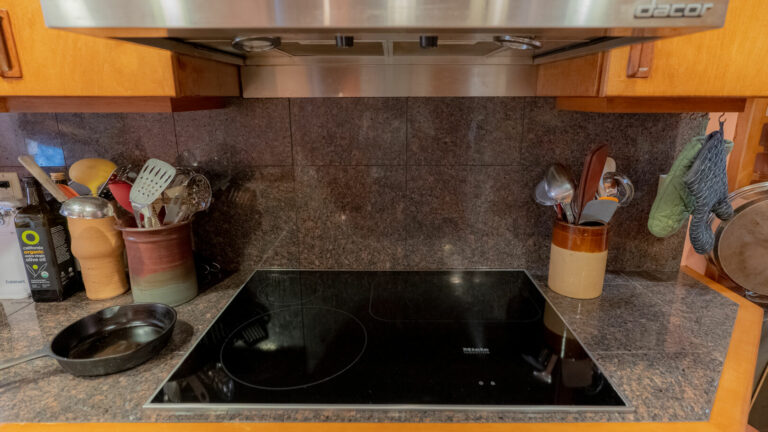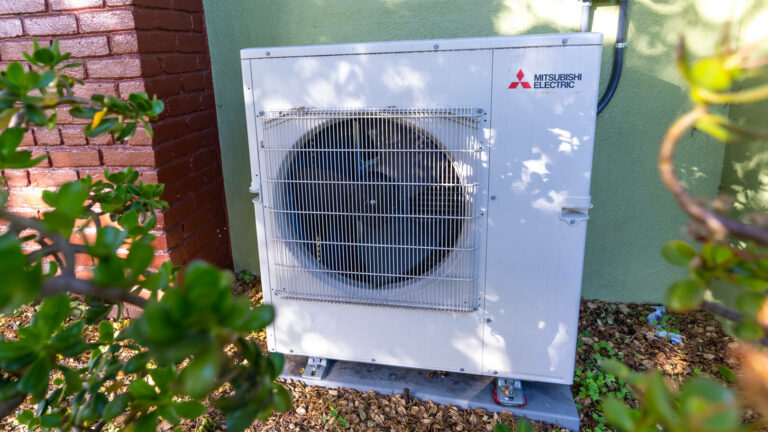Overview
Kathleen and Andre Goforth retrofitted their 1550 sq. ft., 80-year-old San Carlos residence into a zero emission, substantially self-powered, all-electric home. Their goals were to reduce their greenhouse gas footprint, improve energy efficiency, reduce energy costs, and improve resilience to extreme heat and wildfire smoke events.
They began in August 2020 by adding a Powerwall to store power generated by the solar panels they had installed in 2015. In early 2021, they replaced their gas-powered water heater with a heat pump model and began consulting with a BayREN Energy Advisor about whole-home electrification. They replaced their gas furnace and leaky, asbestos-wrapped ducting with a heat pump system, including an air handler with MERV 13 air filtration, smart thermostat, and new ducting for the main floor of their house, and a ductless, mini-split, wall-mounted unit for the upstairs bedroom; beefed up their insulation and air sealing; and replaced their gas stove with an induction cooktop. Their gas meter was removed in October 2021.
The Goforths also upgraded their electrical panel to 200 amps for greater flexibility, installed an EV charger to power their new (used) Nissan Leaf, and replaced all their light bulbs with LEDs.
In the 12 months preceding their full electrification, the Goforths’ solar panels and Powerwall provided 37%-100% of their monthly electricity needs, depending on the time of year, while most of their water heating, space heating, and cooking needs were met by gas combustion. In their first six months of full electrification (October 2021 through March 2022), their electricity usage was approximately double what it had been during the same period a year earlier so they drew from the grid more often, but with no gas bill, their average monthly energy cost was 32% lower. Their solar panels and Powerwall provided, on average, 36% of their home’s total energy needs through the winter, increasing to 71% by April. Since they opted into Peninsula Clean Energy’s ECO100 service a few years ago, their home now runs entirely on renewable energy even when drawing from the grid.
Passive Design Strategies:
- Shading, landscaping
- Shading, interior window shading
- Envelope insulation
- R-38 attic pull-down stairs cover
Special Features:
- Microgrid maintains power during grid outage
- Onsite renewable energy: rooftop solar PV (3.38 kWp)
- Onsite energy storage: Tesla Powerwall
- Heat pump water heater
- Air source heat pump for space heating and cooling
- Induction cooktop
- Energy Star appliances
- Level 2 EV charger
- Removed gas meter
- Upgraded electrical panel from 100 to 200 amps
Project Team:
Energy Consultant: BayREN Energy Advisor (Jason Green)
HVAC Contractor: Alternative HVAC Solutions
Electric Contractor (panel upgrade & new circuits for induction & EV): Adary Electric
Heat Pump Water Heater Contractor: emeraldEco
Plumbing Contractor (cap gas line to old gas stove): NJ Plumbing





